Abstract
The origin of leishmaniasis in the New World is discussed, and the numerous forms of the disease are briefly described. The epidemological pattern of American leishmaniasis is clearly that of a zoonosis in various stages of development. Nine geographical types of cutaneous leishmaniasis are recognized, and probably others exist also; the visceral disease is of the well known Mediterranean type and of a uniform type throughout the Americas. The prevalence of human infection in the different regions is discussed with particular reference to the animal reservoirs. Disturbances of the terrain for agricultural development, road construction, etc., lead to epidemics and there is some evidence that the disease is now spreading in Latin America.
Full text
PDF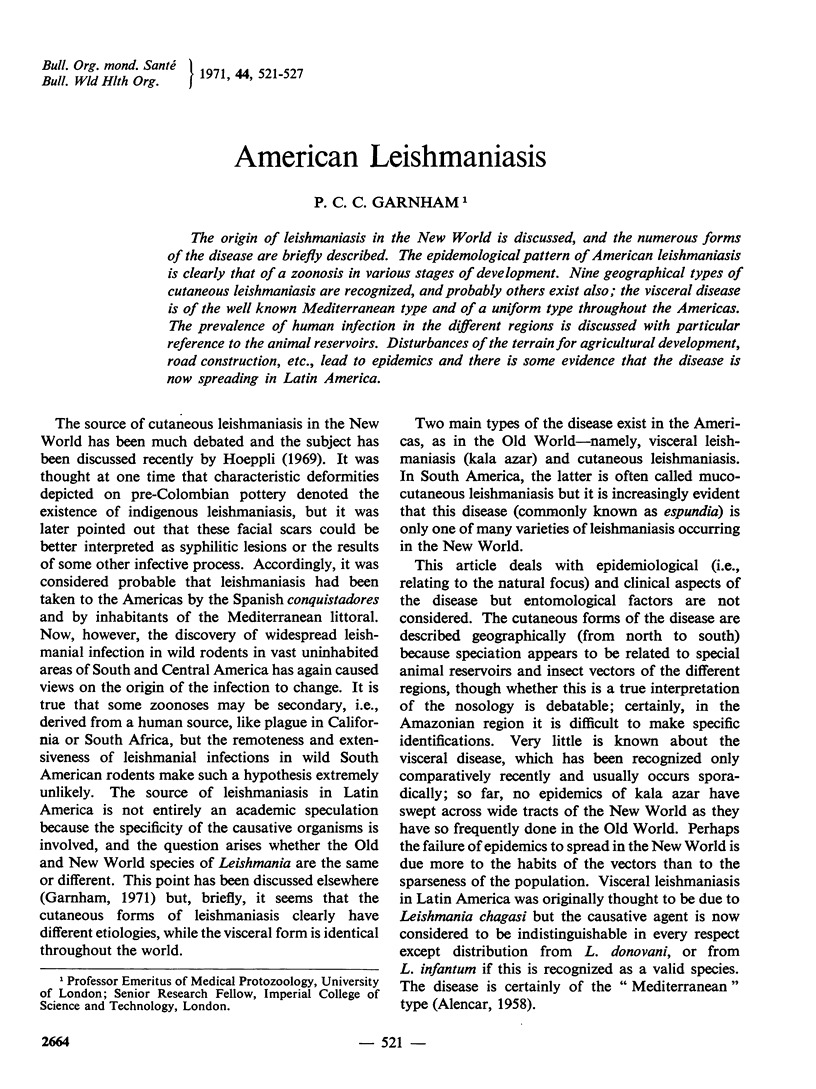
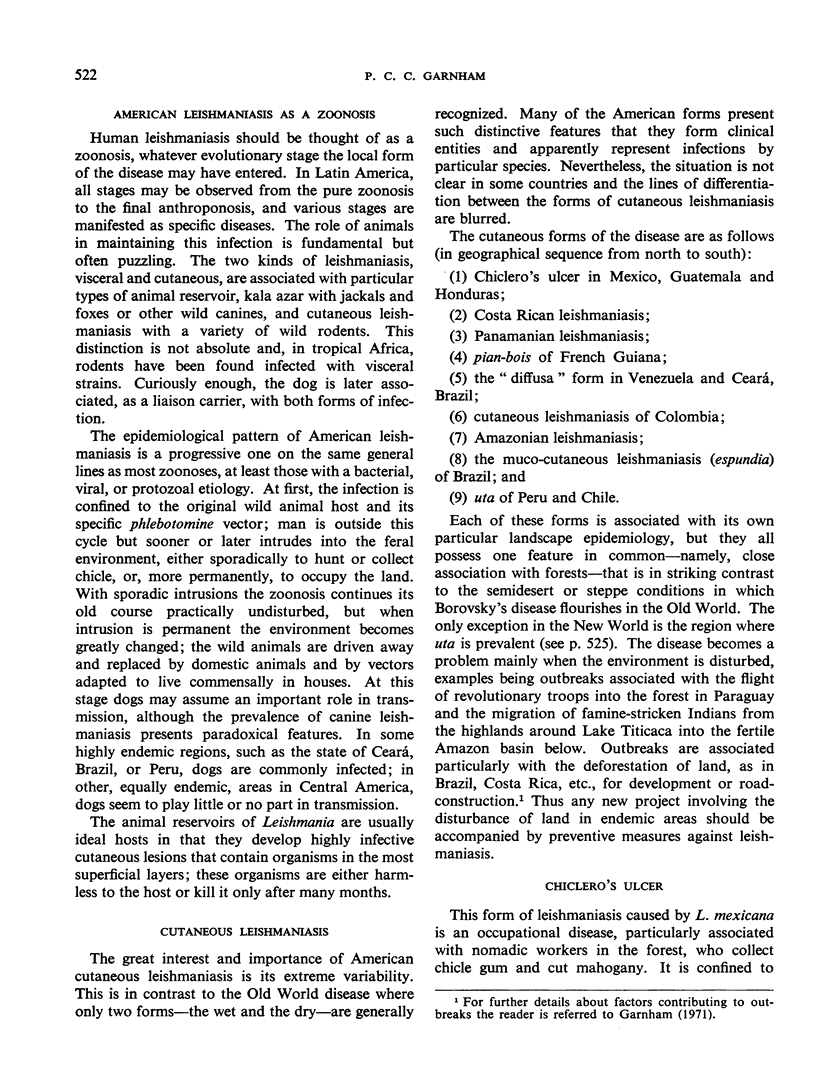
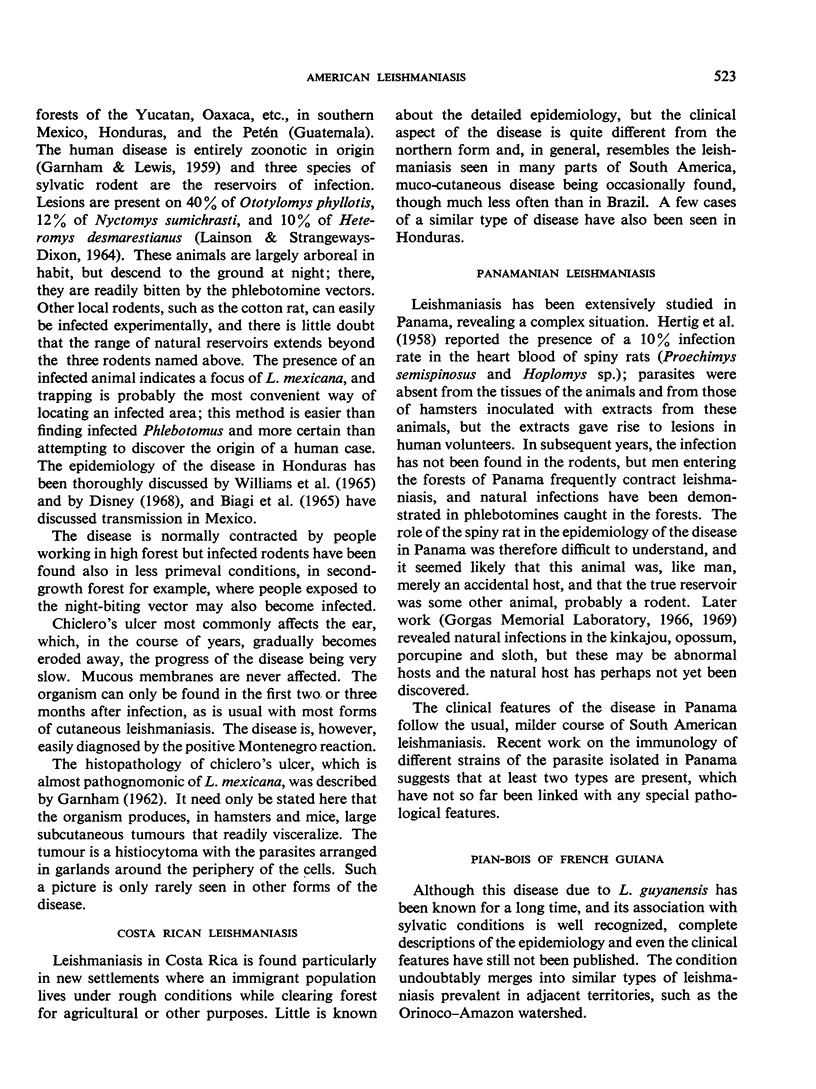
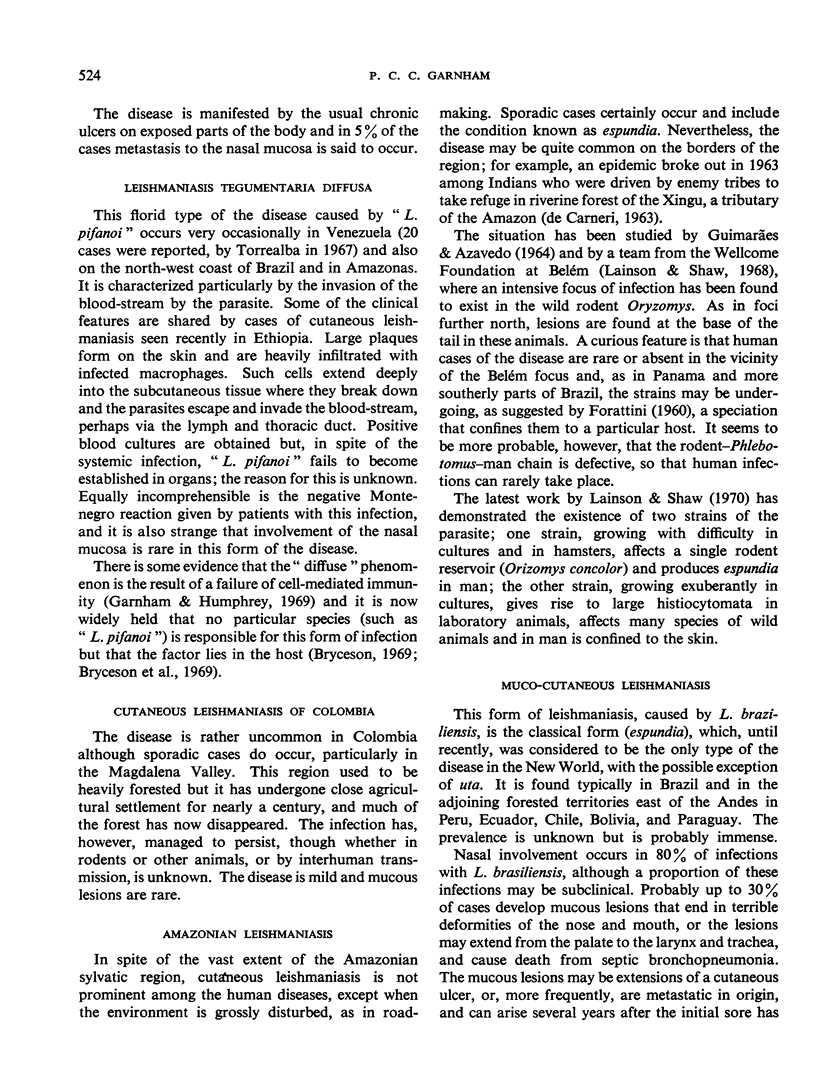
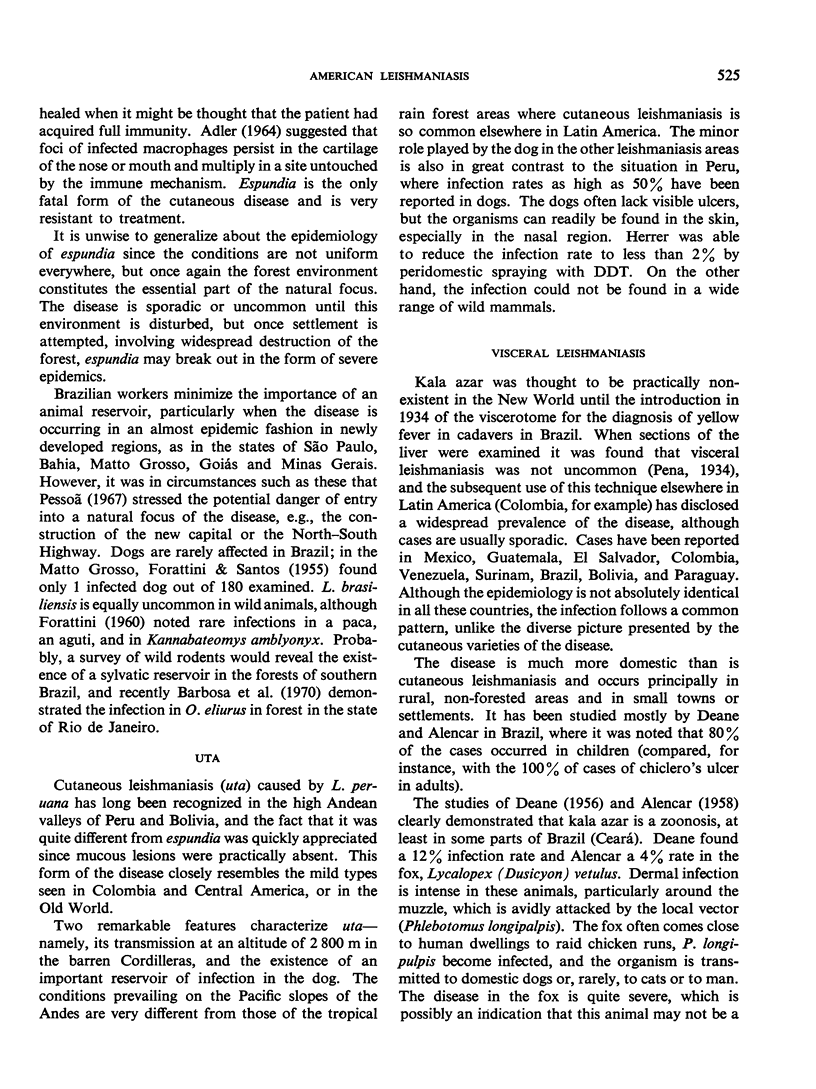
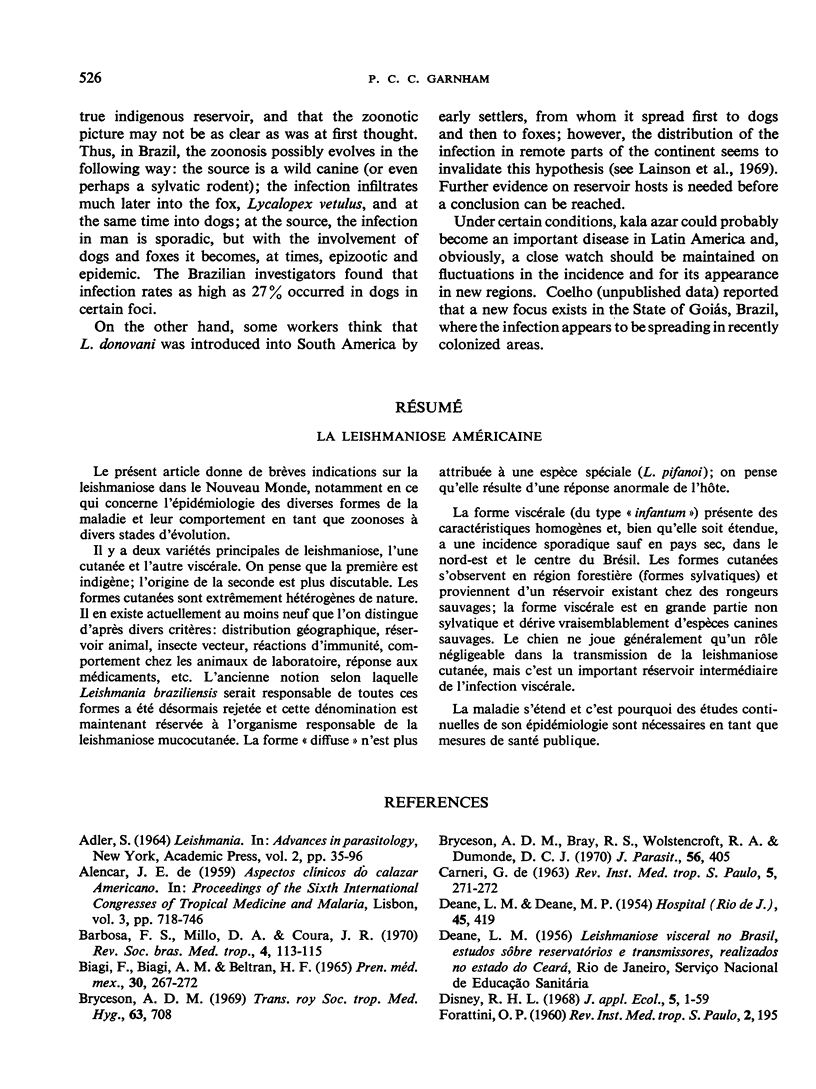

Selected References
These references are in PubMed. This may not be the complete list of references from this article.
- ADLER S. LEISHMANIA. Adv Parasitol. 1964;2:35–96. doi: 10.1016/s0065-308x(08)60586-2. [DOI] [PubMed] [Google Scholar]
- Bryceson A. D. Diffuse cutaneous leishmaniasis in Ethiopia. I. The clinical and histological features of the disease. Trans R Soc Trop Med Hyg. 1969;63(6):708–737. doi: 10.1016/0035-9203(69)90116-3. [DOI] [PubMed] [Google Scholar]
- DE CARNERI I., NUTTELS N., MIRANDA J. A. EPIDEMIA DE LEISHMANIOSE TEGUMENTAR ENTRE OS 'INDIOS WAUR'A DO PARQUE NACIONAL DO XINGU (ESTADO DE MATO GROSSO, BRASIL) Rev Inst Med Trop Sao Paulo. 1963 Nov-Dec;5:271–272. [PubMed] [Google Scholar]
- DEANE L. M., DEANE M. P. Encontro de leishmanias nas väsceras e na pele de uma raposa, em zona endêmica de calazar, nos arredores de Sobral, Ceará. Hospital (Rio J) 1954 Apr;45(4):419–421. [PubMed] [Google Scholar]
- GARNHAM P. C., LEWIS D. J. Parasites of British Honduras with special reference to leishmaniasis. Trans R Soc Trop Med Hyg. 1959 Jan;53(1):12–40. doi: 10.1016/0035-9203(59)90080-x. [DOI] [PubMed] [Google Scholar]
- LAINSON R., STRANGWAYS-DIXON J. THE EPIDEMIOLOGY OF DERMAL LEISHMANIASIS IN BRITISH HONDURAS: II. RESERVOIR-HOSTS OF LEISHMANIA MEXICANA AMONG THE FOREST RODENTS. Trans R Soc Trop Med Hyg. 1964 Mar;58:136–153. doi: 10.1016/0035-9203(64)90003-3. [DOI] [PubMed] [Google Scholar]
- Lainson R., Shaw J. J. Leishmaniasis in Brazil. V. Studies on the epidemiology of cutaneous leishmaniasis in Mato Grosso State, and observations on two distinct strains of Leishmania isolated from man and forest animls. Trans R Soc Trop Med Hyg. 1970;64(5):654–667. doi: 10.1016/0035-9203(70)90002-7. [DOI] [PubMed] [Google Scholar]
- Lainson R., Shaw J. J. Leishmaniasis in Brazil: I. Observations on enzootic rodent leishmaniasis--incrimination of Lutzomyia flaviscutellata (Mangabeira) as the vector in the Lower Amazonian Basin. Trans R Soc Trop Med Hyg. 1968;62(3):385–395. doi: 10.1016/0035-9203(68)90090-4. [DOI] [PubMed] [Google Scholar]
- Lainson R., Shaw J. J., Lins Z. C. Leishmaniasis in Brazil. IV. The fox, Cerdocyon thous (L) as a reservoir of Leishmania donovani in Para state, Brazil. Trans R Soc Trop Med Hyg. 1969;63(6):741–745. doi: 10.1016/0035-9203(69)90118-7. [DOI] [PubMed] [Google Scholar]
- WILLIAMS P., LEWIS D. J., GARNHAM P. C. ON DERMAL LEISHMANIASIS IN BRITISH HONDURAS. Trans R Soc Trop Med Hyg. 1965 Jan;59:64–71. doi: 10.1016/0035-9203(65)90140-9. [DOI] [PubMed] [Google Scholar]


